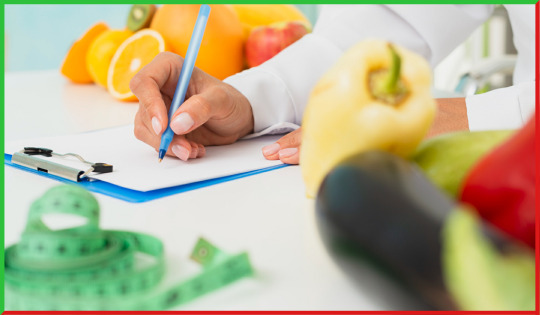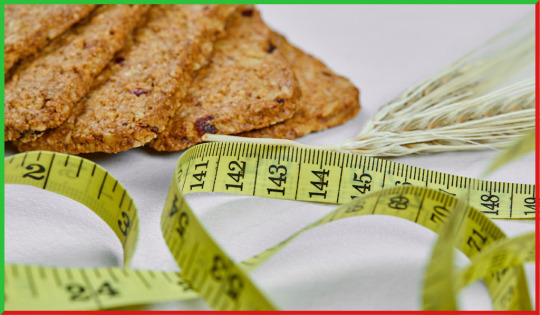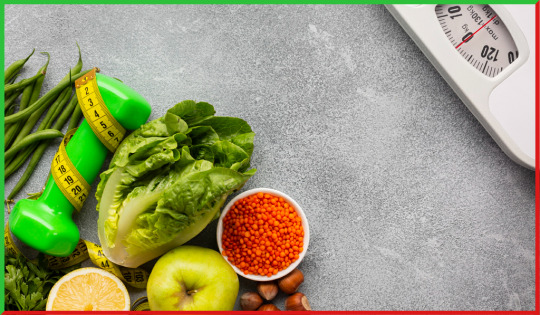#CalorieCounting
Explore tagged Tumblr posts
Text
Calorie Tracking
How to Track Calories Effectively
Tracking your calories doesn’t have to be complicated! Here’s how you can do it:
1️⃣ Use a Calorie Tracking App 📱 Apps like MyFitnessPal, Cronometer, and Lose It! help log your meals and track calories effortlessly.
2️⃣ Know Your Maintenance Calories 🔢 Use a TDEE (Total Daily Energy Expenditure) calculator to estimate how many calories you burn daily.
3️⃣ Weigh & Measure Your Food ⚖️ A food scale and measuring cups ensure accurate portion tracking.
4️⃣ Plan Your Meals Ahead 🍽️ Prepping meals in advance prevents overeating and helps you stay consistent.
How to Read Serving Sizes Correctly
✔ Check the Serving Size – Always look at how much a "serving" is on the nutrition label. ✔ Look at Calories Per Serving – Multiply accordingly if you eat more than one serving. ✔ Weigh Your Portions – Using a scale ensures accurate calorie tracking. ✔ Beware of Hidden Calories – Oils, dressings, and sauces can add extra calories! Tips for Making CICO Work for You
✅ Be Consistent – Track your intake daily. ✅ Focus on Whole Foods – Prioritize nutrient-dense options. ✅ Don’t Overrestrict – Allow yourself some flexibility. ✅ Stay Active – Exercise boosts calorie burn. ✅ Be Patient – Fat loss is a gradual process!
💡 Final Thoughts Understanding CICO can help you take control of your health and fitness. Tracking, awareness, and consistency are key!
Do you track your calories? Let me know in the comments! 💬👇
📌 Follow for more fitness & health tips!
#CaloriesInCaloriesOut#CICO#WeightLossTips#FitnessJourney#HealthAndWellness#CalorieDeficit#HealthyEating#NutritionFacts#WorkoutMotivation#FatLoss#MetabolismBoost#FoodTracking#TDEE#FitnessEducation#SelfImprovement#MacrosMatter#MealPlanning#HealthyLifestyle#WeightLossJourney#ExerciseTips#BMR#FitnessGoals#HealthyLiving#MindfulEating#BodyRecomposition#WellnessTips#FitnessMindset#CalorieCounting#NutritionTips#HolisticHealth
4 notes
·
View notes
Text
Why Calorie Counting Fails 90% of the Time

Are you one of those individuals who is determined to live a healthier lifestyle, either by losing weight or gaining muscle mass? If so, you’ve probably come across the concept of counting calories as a means to achieve your goals. However, I’m here to reveal a big secret: I am strongly opposed to meticulously calculating calorie intake. In this blog post, we’ll delve into the reasons why relying on calorie counting may not provide accurate or even approximate results.
The Problem with Counting Calories

Let’s imagine a scenario where you go grocery shopping and purchase rice, pasta, chicken, and various other items. You might use a program or rely on the nutritional information provided on the packaging to calculate the calories, proteins, fats, and carbohydrates in each product. However, can you be certain that these figures are entirely accurate? The reality is, there are factors beyond our control that can influence the accuracy of these numbers.
Inaccuracies in Food Measurements
Consider this: in supermarkets, poultry is often injected with a solution using a compressor and a special syringe. This process can add up to 30% of the weight of the chicken. Do the apps or programs you use account for this manipulation? Similarly, do they consider the steps involved in processing and handling the food before it reaches the store shelves? It’s challenging to obtain precise measurements of the actual meat content in a given portion. The mass of the product you consume may not accurately reflect the weight you purchased.
Individual Variations and Digestive Processes
Another crucial factor to consider is the individual variations in our digestive processes. Our bodies possess a unique set of enzymes and digestive capabilities. Even if you calculate the calories accurately, you cannot be certain how efficiently your body will absorb and process the nutrients. Factors such as stress or a poorly functioning digestive system can hinder the full absorption of the food you consume. Thus, the calories you think you’re consuming may not be entirely utilized by your body.
Lifestyle Changes and Metabolism

When embarking on a new health and fitness journey, such as transitioning to a healthier diet, your metabolism undergoes significant changes. Your metabolic processes and energy expenditure start to accelerate as your body adjusts. Consequently, your calorie requirements may fluctuate from week to week. What may have been suitable one week may no longer be adequate the next. This dynamic nature of our metabolism makes it challenging to rely on fixed formulas or calculations.
A Holistic Approach to Healthy Eating
So, what should you do instead of meticulously counting calories? As I mentioned in my previous articles, my approach is tailored for individuals starting a new lifestyle, particularly those who are not accustomed to sports or have a well-balanced diet. It’s important to shift our focus from calorie counting to a holistic approach to healthy eating.
Understanding Baseline Needs
We start by estimating a baseline calorie requirement in hypothetical units we refer to as calories. However, it’s crucial to understand that these values may not be entirely accurate. They serve as a starting point rather than absolute values. Our body’s caloric needs can vary, and we need to adapt our approach accordingly.
Listening to Your Body
Instead of fixating on calorie counts, it’s important to adopt a holistic approach to healthy eating. This means focusing on the quality of your food choices, listening to your body’s hunger and fullness cues, and prioritizing nutrient-dense whole foods. By nourishing your body with a balanced and varied diet, you can support your overall health and well-being without getting caught up in the numbers game.
It’s also worth noting that sustainable weight loss or muscle gain is not solely determined by calorie counting. Factors such as physical activity, sleep, stress management, and overall lifestyle habits play significant roles in achieving your desired results. A more comprehensive approach that encompasses these factors will yield better long-term outcomes.
Ultimately, the goal is to develop a healthy relationship with food and cultivate sustainable habits that support your well-being. Instead of obsessing over precise calorie counts, focus on nourishing your body, staying active, and making informed choices that align with your goals and values. Trust your body’s innate wisdom and strive for a balanced and enjoyable approach to nutrition and fitness.
If you liked this blog, check out our other articles on:
Your Path to Weight Loss: Portion Control
Replacing Deprivation with Excellence: The Mistake of Jake
Conclusion

Counting calories may seem like a logical approach to achieving your health and fitness goals. However, it’s crucial to recognize the limitations and inaccuracies associated with this method. In reality, the accuracy of calorie counts for packaged foods and the variations in individual digestion makes it nearly impossible to rely on calorie counting as an accurate measure of your dietary intake.
Additionally, as your metabolism adjusts and your body undergoes changes during your fitness journey, your calorie needs will fluctuate, further complicating the precision of counting calories.
So, let go of the calorie-counting mentality and embrace a holistic approach to your health journey. Remember, true well-being goes beyond numbers on a scale or in a food diary. It’s about nurturing your body, mind, and spirit in a way that promotes overall vitality and happiness.
#burning calories#diet#fitness#slimmingworld#weight loss#caloriecounting#lose weight#weightlosstips#weightlossjourney#weightloss#loseweightfast#fatburn#healthyliving#nutrition#healthyeating#healthyfood#healthylifestyle
2 notes
·
View notes
Text
Counting Calories in Kal Dosa: A Fitness Enthusiast’s Guide to Indian Breakfasts
🍽️ Introduction: The Dosa Dilemma

Dosas are a beloved part of South Indian cuisine, but if you’re watching your calories, you may wonder if they fit into a fitness-focused diet. Kal dosa, thicker and softer than its crispy cousin, has gained popularity among health-conscious eaters. But how does it measure up nutritionally? Let’s dive into the facts."kiyas kitchen".
🥞 What Is Kal Dosa?
How It’s Different from Regular Dosa
Kal dosa is a soft, thick dosa typically cooked on a stone or heavy cast iron pan (called a "kal" in Tamil, meaning stone). Unlike traditional dosa, it’s not spread thin, and it’s usually fluffy and smaller in size.
Ingredients Overview
The base ingredients are simple:
Parboiled rice
Urad dal (black gram)
A pinch of fenugreek seeds
Salt
Water
No fancy additives—just fermented batter and a hot pan.
📊 Nutritional Breakdown of Kal Dosa
Calories per Kal Dosa
On average, one medium-sized Kal Dosa contains around 90–110 calories, depending on thickness and oil used. Here's a breakdown without chutneys or sambar: ComponentAmount (per dosa)Calories100 kcalCarbohydrates20gProtein2gFat1g (more with oil)Fiber1–2g
Protein, Carbs, and Fats
While high in complex carbohydrates, Kal Dosa has modest protein content and low fat, unless ghee or oil is added during cooking.
Micronutrients and Fiber
It provides small amounts of:
Iron
B vitamins
Calcium (if cooked in cast iron)
Dietary fiber, especially if whole grains are used
⚖️ Kal Dosa vs Regular Dosa: Which Is Healthier?
FactorKal DosaRegular DosaThicknessThickerThin & CrispyOil UsageModerateCan be high (to crisp)SatietyHigherLowerGlycemic IndexSlightly LowerHigher
Kal Dosa wins in satiety and may help prevent overeating due to its dense texture.
🥗 Portion Control: How Many Kal Dosas Should You Eat?
If you're aiming for a 400-calorie breakfast, stick to:
2 medium-sized kal dosas
A side of vegetable chutney or low-oil sambar
Always measure your portion and avoid overloading on coconut chutney or fried sides.
💪 Kal Dosa for Weight Loss: Smart Eating Tips
Pairing It with Low-Calorie Sides
Tomato chutney (no oil)
Mint-coriander chutney
Steamed vegetables
Moong dal curry
Cooking with Less Oil
Use a non-stick or cast iron pan to minimize oil usage. Just a few drops of oil or ghee are enough.
Tracking Your Macros
Use fitness apps like MyFitnessPal or HealthifyMe to log:
Number of dosas
Ingredients used
Side dishes added
🏠 Making Kal Dosa Healthier at Home
Ingredient Swaps
Replace part of the rice with millets or brown rice
Add flax seeds or chia seeds to the batter
Mix in grated veggies like carrots or beetroot
Healthier Cooking Methods
Use minimal oil
Opt for an iron skillet to boost iron content
Cook at medium heat to prevent charring
📅 Sample Healthy Kal Dosa Meal Plan
TimeMealBreakfast2 kal dosas + mint chutney + herbal teaMid-morning1 banana or 10 almondsLunchQuinoa + dal + sabziSnackButtermilk or a boiled eggDinnerSoup + salad + 1 kal dosa
This plan keeps daily calories in check while balancing macronutrients.
🥦 The Role of Kal Dosa in a Balanced Indian Diet
Kal Dosa fits beautifully into a South Indian-inspired clean eating plan. It’s:
Naturally fermented (good for gut health)
Gluten-free
Easy to digest
Ideal for vegetarians and vegans
In moderation, it's a smart, traditional choice.
❓ FAQs
Q1: Can I eat Kal Dosa daily? Yes, if portioned correctly and paired with healthy sides.
Q2: Is Kal Dosa good for diabetics? Yes, due to its lower glycemic index, especially when made with millets.
Q3: Does Kal Dosa help in weight loss? Indirectly—if it replaces higher-calorie breakfast options and is eaten in moderation.
Q4: What’s the best pan for Kal Dosa? Cast iron tawas or traditional stone pans retain heat best and boost mineral content.
Q5: Can I freeze Kal Dosa batter? Yes, for up to a week. Thaw before use and ferment if needed.
Q6: How much oil should I use per dosa? About ½ tsp or less per dosa is ideal for a low-fat version.
✅ Conclusion
Kal Dosa isn’t just a delicious breakfast—it’s a smart, calorie-conscious choice for fitness lovers. With the right portions, minimal oil, and thoughtful pairings, it can be a nutritious staple in your weight management plan. Embrace tradition with a health-first twist, and you might just find your new favorite breakfast.
#KalDosa#IndianBreakfast#HealthyEating#CalorieCounting#FitnessMeals#TraditionalFood#SouthIndianFood#CleanEating#LowCalorieMeals#FitnessGoals
0 notes
Text
How Many Calories Should You Burn to Lose 1kg?
Weight loss is simple: 1 kilogram of fat is 7,700 calories. To lose 1kg, you need to burn this amount. But, the journey is not always easy.
Experts say losing 1kg a week is safe. You need a daily calorie deficit of 1,100 calories. But, cutting calories too much can harm your health. Even intense exercise, like running for 15 hours, is not enough on its own.
Mixing diet and exercise is key. For example, eating 1,000 calories less and burning 1,000 calories through exercise is a good balance. But, your metabolism and lifestyle also play a big role in your results.
#calories#weightloss#caloriecounting#caloriedeficit#weightlossjourney#diet#fitness#healthyeating#food#healthylifestyle#healthyfood#caloriecountinguk#healthy#nutrition
0 notes
Text
#CICO#CICODiet#CaloriesInCaloriesOut#CICOWeightLoss#CICOWorks#CalorieCounting#CalorieDeficit#TrackYourMacros#ScienceBasedDiet#NoRestrictions#youtube#healthyliving#nutrition#cleaneating#wellness#guthealth#weightlossjourney#vintage#vegan#vegan diet#vegan food#vegan recipes#veganfood#vegetables#vegetarian#veggies#healthyeating#wellnessjourney#healthylifestyle#vinaigrette
0 notes
Text
#CalorieCounting#TrackYourFood#HealthyHabits#NutritionTips#PortionControl#HealthGoals#FoodTracking#WellnessJourney
1 note
·
View note
Text
Ready for Summer: Your Blueprint to a Lean, Confident You

Summer is just around the corner—now’s the time to transform your body, boost your energy, and step into the season with confidence. Whether you’re starting your weight‑loss journey or aiming to fine‑tune the gains you’ve already made, this guide has everything you need: proven strategies, science‑backed nutrition advice, and easy‑to‑follow gym training tips. Plus, discover how our Ultimate Weight Loss eBook and Customized Diet & Macro Planner on Etsy can fast‑track your progress with expert guidance every step of the way.
Why Now Is the Perfect Moment
Seasonal Motivation The promise of longer days, outdoor activities, and beach days can turbocharge your motivation. Use these next weeks to build momentum before summer hits.
Metabolic Boost A well‑structured plan of calorie control and strength training doesn’t just help you lose fat—it revs up your metabolism, making every workout and healthy meal more effective.
Confidence & Well‑Being Beyond aesthetics, getting lean and fit fuels mental clarity, reduces stress, and sets the stage for a happier, more active summer.
3 Core Steps to Get Lean & Toned
1. Dial in Your Nutrition
Calorie Deficit Done Right: Track your daily intake to ensure you’re eating slightly fewer calories than you burn.
Macronutrient Balance: Aim for a balanced split (protein, carbs, fats) to preserve muscle while shedding fat.
Whole Foods Focus: Prioritize lean proteins, colorful vegetables, whole grains, and healthy fats for sustained energy and satiety.

2. Structured Strength Training
Compound Movements First: Squats, deadlifts, bench presses, and rows torch calories and build functional muscle.
Progressive Overload: Gradually increase weight, reps, or sets each week to keep challenging your body.
Consistency Over Perfection: Aim for 3–5 workouts per week—consistency is the secret sauce.
3. Strategic Cardio & Recovery
HIIT & Steady‑State Mix: Combine high‑intensity intervals (20–30 minutes) with moderate‑intensity cardio for optimal fat loss.
Active Rest Days: Yoga, walking, or gentle mobility work helps your body recover and prevents burnout.
Sleep & Stress Management: Aim for 7–9 hours of quality sleep and practice stress‑busting habits like meditation or deep breathing.
Unlock the Ultimate Weight Loss eBook
Take the guesswork out of your transformation with our best‑selling guide: Ultimate Weight Loss eBook: Guide, Tips & Meal Plans Check it out »
Inside you’ll find:
Step‑by‑step meal plans for beginners to advanced
Science‑backed nutrition protocols and timing strategies
Sample workouts and progress trackers to keep you accountable
Level Up with a Customized Diet & Macro Plan
For those who want a truly bespoke approach, our Customized Weight Loss Diet Planner pairs expert nutrition coaching with personalized macros and calorie targets. Perfect for:
Athletes aiming for peak performance
Busy professionals needing flexible, on‑the‑go advice
Anyone who’s tried one‑size‑fits‑all diets without success
Secure your tailored plan here: Customized Weight Loss Diet & Macro Planner
Take Action Today
Download the eBook and start your meal plans immediately.
Upgrade to the Customized Planner for one‑on‑one guidance and fine‑tuned macros.
Join Our Community: Share your progress, ask questions, and celebrate wins on social—because accountability is everything!
Get ready to rock your best summer body yet. Let’s make these next weeks count!
#summerbody#leanandstrong#nutritiontips#macros#caloriecounting#transformationTuesday#healthylifestyle#weight loss#protein#diet plan#i want to lose weight#fat belly#fat loss#summer vibes#summer#shredded#gym#exercices#low carb#ketodiet#ketorecipes#myfitnesspal#fitness
0 notes
Text
Calories 101
📢 Welcome to my blog! Today, let’s break down Calories In, Calories Out (CICO)—the fundamental principle behind weight management. If you’ve ever wondered how fat is stored or how to track calories properly, this guide will give you all the answers! 🥑🔥 What is Calories In, Calories Out (CICO)?
CICO is the simple idea that your weight is determined by the balance between: ✅ Calories In – The energy you consume from food and drinks ✅ Calories Out – The energy your body burns through metabolism, movement, and digestion
➡️ If you eat more calories than you burn, you store fat. ➡️ If you burn more than you eat, you lose fat. ➡️ If calories in and out are equal, your weight stays the same.
🔹 Example: If your body burns 2,000 calories daily but you consume 2,500, the extra 500 calories get stored as fat over time. DISCLAIMER: Most people burn around 2,000 calories a day just to stay alive! These calories are burned from your body digesting food, thinking, and keeping your organs functioning—even if you don’t move at all, just from sleeping. Now, imagine if you’re exercising—this can make a massive difference in your body over a month or two!
It’s not necessary to eat less than 1,500 calories if you’re exercising because an average workout burns 300–500 calories. Cutting calories too low can slow down your metabolism and affect your energy levels, so balance is key!
How Fat is Stored & Burned
🔥 How Fat is Made
When you eat more calories than your body needs, the excess energy is converted into triglycerides and stored in fat cells.
Over time, excess fat accumulates in different parts of the body, leading to weight gain.
🏃♀️ How Fat is Lost
When you eat fewer calories than you burn, your body breaks down stored fat for energy.
Triglycerides in fat cells are converted into energy, shrinking the fat cells, leading to weight loss.
💡 Key Takeaway: A consistent calorie deficit (eating fewer calories than you burn) is required for weight loss! 💡 Final Thoughts Understanding CICO can help you take control of your health and fitness. Tracking, awareness, and consistency are key!
Do you track your calories? Let me know in the comments! 💬👇
📌 Follow for more fitness & health tips! 🏋️♀️💖
#CaloriesInCaloriesOut#WeightLossTips#CICO#FitnessJourney#HealthAndWellness#CalorieDeficit#HealthyEating#NutritionFacts#WorkoutMotivation#FatLoss#MetabolismBoost#FoodTracking#TDEE#FitnessEducation#SelfImprovement#MacrosMatter#MealPlanning#HealthyLifestyle#WeightLossJourney#ExerciseTips#BMR#FitnessGoals#HealthyLiving#MindfulEating#BodyRecomposition#WellnessTips#FitnessMindset#CalorieCounting#NutritionTips#HolisticHealth
2 notes
·
View notes
Text
How to Incorporate More Movement into Your Day
#weightloss#caloriedeficit#losingweight#weightlossmotivation#weightlossjourney#weightlosstips#weightlossinspiration#caloriecounting#weightlosssupport#weightlosscommunity#weightlossprogress#weightlossgoal#weightlossgoals#weightlosssuccess#weightlosstransformations#weightlossmeals#weightwatchers#slimmingworldjourney#weightlossrecipes#weightlossstory#weightlossblogger#weightlosshelp#weightlosscoach#weightlossdiet#weightlosstea#weightlosschallenge#weightlossbeforeandafter#weightlossideas#weightlossprogram#weightlossadvice
0 notes
Text
#Diets#WeightLoss#HealthyEating#FitnessJourney#LoseWeight#WeightLossJourney#Nutrition#HealthyLifestyle#FitLife#LowCarb#KetoDiet#IntermittentFasting#CleanEating#FatLoss#WeightLossGoals#HealthyHabits#DietPlan#WeightLossMotivation#LoseFat#EatClean#BodyTransformation#FitnessGoals#HealthyFood#CalorieCounting#MindfulEating#FitnessInspiration
0 notes
Text
#Diets#WeightLoss#HealthyEating#FitnessJourney#LoseWeight#WeightLossJourney#Nutrition#HealthyLifestyle#FitLife#LowCarb#KetoDiet#IntermittentFasting#CleanEating#FatLoss#WeightLossGoals#HealthyHabits#DietPlan#WeightLossMotivation#LoseFat#EatClean#BodyTransformation#FitnessGoals#HealthyFood#CalorieCounting#MindfulEating#FitnessInspiration
0 notes
Text
#Diets#WeightLoss#HealthyEating#FitnessJourney#LoseWeight#WeightLossJourney#Nutrition#HealthyLifestyle#FitLife#LowCarb#KetoDiet#IntermittentFasting#CleanEating#FatLoss#WeightLossGoals#HealthyHabits#DietPlan#WeightLossMotivation#LoseFat#EatClean#BodyTransformation#FitnessGoals#HealthyFood#CalorieCounting#MindfulEating#FitnessInspiration
0 notes
Text
#Diets#WeightLoss#HealthyEating#FitnessJourney#LoseWeight#WeightLossJourney#Nutrition#HealthyLifestyle#FitLife#LowCarb#KetoDiet#IntermittentFasting#CleanEating#FatLoss#WeightLossGoals#HealthyHabits#DietPlan#WeightLossMotivation#LoseFat#EatClean#BodyTransformation#FitnessGoals#HealthyFood#CalorieCounting#MindfulEating#FitnessInspiration
0 notes
Text
#Diets#WeightLoss#HealthyEating#FitnessJourney#LoseWeight#WeightLossJourney#Nutrition#HealthyLifestyle#FitLife#LowCarb#KetoDiet#IntermittentFasting#CleanEating#FatLoss#WeightLossGoals#HealthyHabits#DietPlan#WeightLossMotivation#LoseFat#EatClean#BodyTransformation#FitnessGoals#HealthyFood#CalorieCounting#MindfulEating#FitnessInspiration
0 notes
Text
#Diets#WeightLoss#HealthyEating#FitnessJourney#LoseWeight#WeightLossJourney#Nutrition#HealthyLifestyle#FitLife#LowCarb#KetoDiet#IntermittentFasting#CleanEating#FatLoss#WeightLossGoals#HealthyHabits#DietPlan#WeightLossMotivation#LoseFat#EatClean#BodyTransformation#FitnessGoals#HealthyFood#CalorieCounting#MindfulEating#FitnessInspiration
0 notes
Text
Does green tea help with weight loss?
#WeightLossHelp#WeightLossCoach#WeightLossTransformation#HealthyEating#Diet#WeightLossFood#Fitness#WeightLossProgram#SlimmingWorld#KetoDiet#Food#WeightLossBeforeAndAfter#CalorieCounting#WeightLossGoals#WeightLossStruggle#WeightLossCommunity#FitnessJourney#Muscle#WeightLossRecipes#GymLife#Crossfit#SelfLove#weightloss#health#nutrition#healthy#healthylifestyle#weightlossjourney
1 note
·
View note